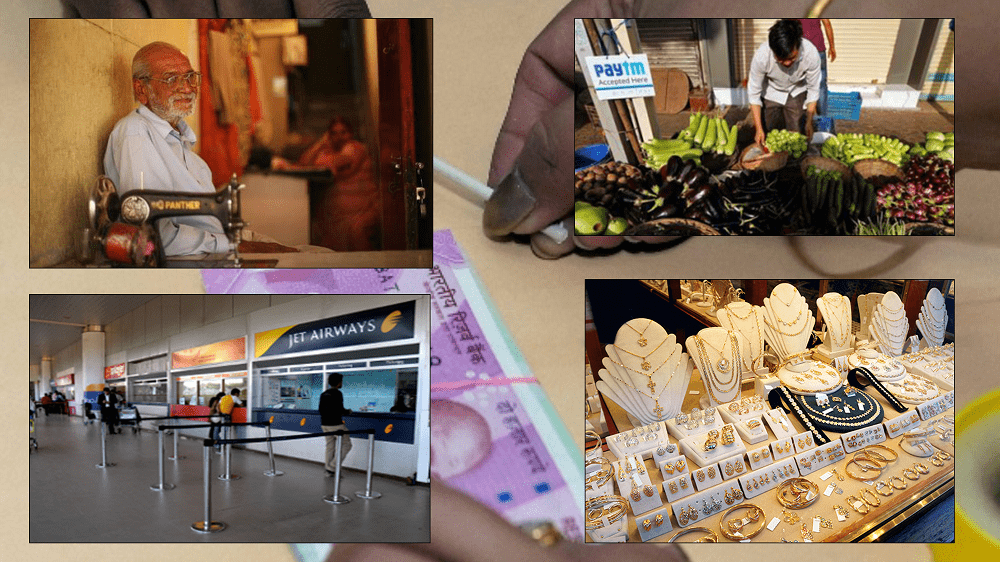I think the note exchange frenzy has halted or lessen a bit and we can see a long picture now. I purposely delayed my analysis, as I believed this was a huge event and in a war, the casualties and gains can only be ascertained, when the fight stops during evening hours and dust settles. A lot of my friends asked why am I not writing on Demonetization? My response is simple – I am not in news business to create headlines. I believe in spreading awareness.
The Demonetization drive in a big financial and economic event and as an advisor we also need to study it from Investment Impact lenses. On November 8th, in a historic move, the Indian Prime Minister announced demonetization of high-denomination currency notes by withdrawing the legal tender of the existing notes of INR 500 and INR 1,000. This move is intended to tackle counterfeiting Indian banknotes, to effectively nullify black money hoarded in cash and curb funding of terrorists with fake notes.
Investment Impact lenses. On November 8th, in a historic move, the Indian Prime Minister announced demonetization of high-denomination currency notes by withdrawing the legal tender of the existing notes of INR 500 and INR 1,000. This move is intended to tackle counterfeiting Indian banknotes, to effectively nullify black money hoarded in cash and curb funding of terrorists with fake notes.
The market is made up of sectors, if we analyze these sectors, demonetisation will impact them in following ways:
Sectoral Impact
|
Sector |
NEAR term impact |
LONG term impact |
|
Real Estate |
Volumes could take a step down as black money leaves the system and this could have a second order impact on revenues across various companies. There can be near-term pain given the dependence on cash and temporary block to cash flow. | The real estate regulatory bill coupled with demonetization is likely to reduce the gap in primary and secondary market transactions. As the sector reorganizes itself, it is likely to transform into corporatized and transparent asset class which could offer a sustainable growth path. |
|
Negative in Near Term, but Positive in Long Term |
||
|
Cement |
Urban housing (15-20% of cement demand) and Rural housing (40-50% of cement demand) will bear the brunt of slowdown in real estate sector. |
Government spending (15-20% of demand) has been the key driver in last 12 months and is likely to sustain. Government may choose to further accelerate the spend through special packages in order to offset near term weakness in the economy. |
|
Negative in Near Term, but Positive in Long Term |
||
|
Auto |
Volume growth across segments could be affected in the next few months. Sales of motorcycles could slow down (since they are largely bought with cash). Sales of luxury cars and premium SUVs, along with the unorganized used car market could also decrease. |
Organized players are likely to gain traction. Further, both the stakeholders — consumers (buyer and seller) will see transparency in transactions. |
|
Negative in Near Term, but Positive in Long Term |
||
|
Consumption |
Cash transactions account for a significant proportion of purchases in several categories. It is possibly highest in jewellery (60-70% for organized players and 90-100% for unorganized players), but fairly high in other segments as well (~70% in paints) |
There could be a shift to organized players, a benefit expected from GST implementation as well. Organized players in FMCG categories with many regional and unbranded players like soaps, laundry, oils etc. are expected to benefit the most. |
|
Negative in Near Term, but Positive in Long Term |
||
|
Banks |
With share of savings moving into banking channel, a rise in deposit base i.e. higher CASA (current accounts, savings accounts) should help to replace the high cost of borrowing and lower overall cost of funds | Banks with strong underwriting and/or strong retail franchise may see a positive impact from an improvement on the liability side and revival in loan growth. |
|
Positive in the Near Term as well as Long Term |
||
|
NBFCs |
As collections in these asset classes are primarily through cash, they would be negatively impacted. | Local money lenders will see a serious challenge to the business. These businesses could see an accelerated shift to Small Finance Banks and MFIs. |
|
Negative in Near Term, but Positive in Long Term for select subsectors |
||
|
Technology, Telecom, Energy and Healthcare |
There might be some marginal impact on data growth (the discretionary component) but the case for this does not appear to be compelling. | |
| Industrials | They may not experience any material impact as payments in the sector are conducted through banking channels. | |
These are major sectors which will get impacted and whether you buy direct stocks or mutual funds or invest in debt, the prices will see a change.
In next article lets see how economy is impacted as markets make money, but economy makes country’s mood.
Share your comments below and do share the article to your friends.










